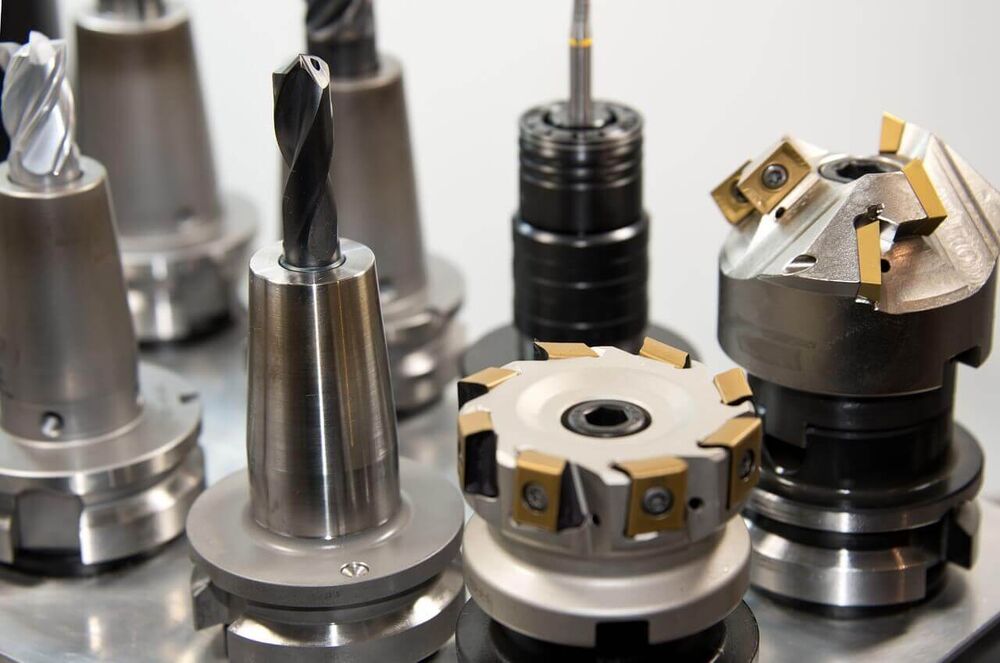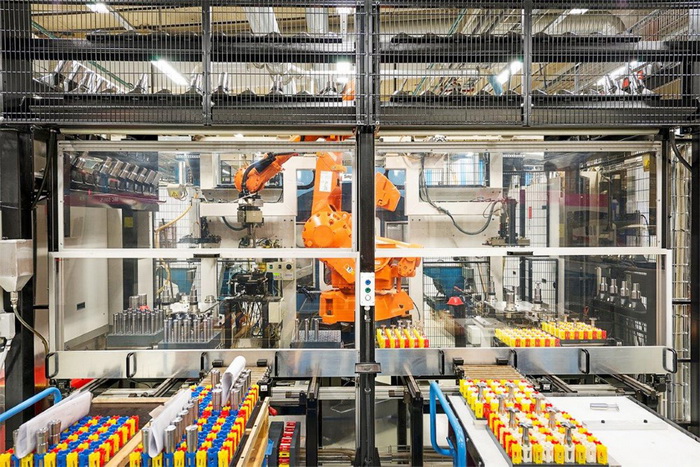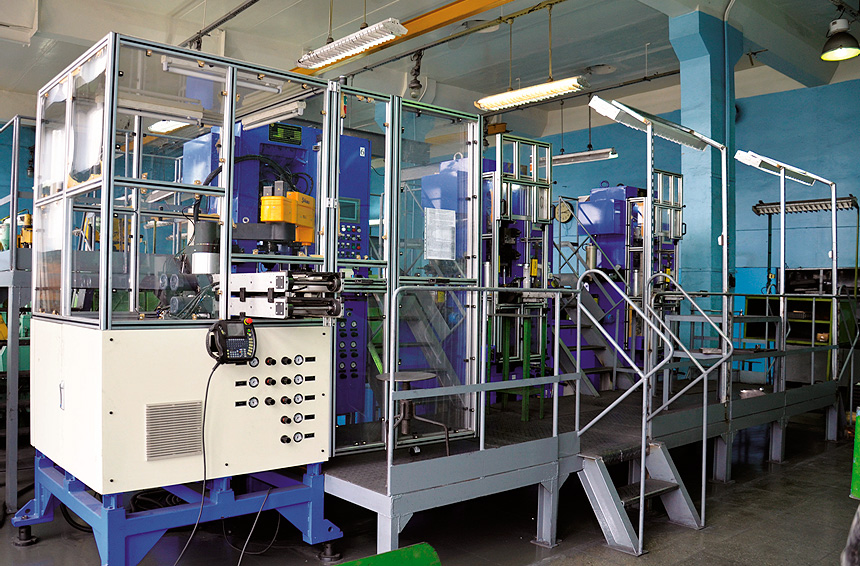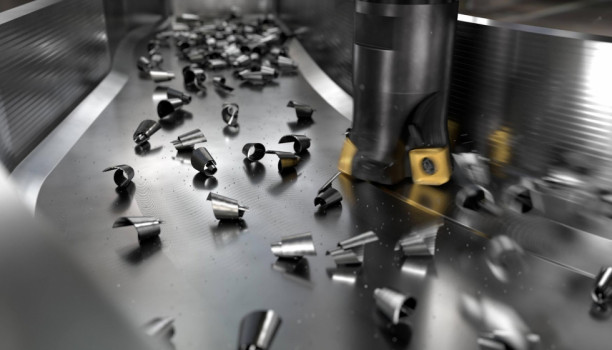A metal-cutting tool is a type of cutting tool used to change the shape and size of the metal workpiece being processed by removing part of the material in the form of chips in order to obtain a finished part or semi-finished product. Today, no industrial sphere related to metal is complete without the use of metal-cutting tools.
It is possible to classify metal-cutting tools based on different criteria. For example, depending on the type of surface to be treated:
- For processing bodies of rotation, external shaped, as well as flat surfaces (Cutters, cutters);
- For hole processing (countersinks, drills, broaches, etc.);
- For threading (dies, taps, etc.);
- For surface treatment of sprockets, spline shafts, etc. (finger and disc cutters, reverse cutters, chisels, broaches, etc.).
Or based on the nature of the processing:
- Blade - designed for cutting off excess material;
- Abrasive - abrasion and bring the surface to the desired shape by grinding.
It seems to us that the classification is the most detailed, depending on the design features of the tool itself:
- Cutters - allow you to perform metalworking with the possibility of multidirectional feed movement;
- Milling cutters - processing takes place by rotational movements;
- Drills are axial-type cutting tools used to create holes in the material, or to increase the diameter of existing ones;
- Countersinks are axial-type tools that adjust the size and shape of existing holes;
- Reamers are an axial tool used to process the walls of holes;
- Caulking is an axial tool used for processing end and cylindrical sections of holes;
- Dies - for cutting external threads on workpieces;
- Taps - for threading in holes;
- Hacksaw blades - for cutting off a part of the workpieces or creating grooves in it, while the cutting movement is translational;
- Chisels- for toothing shaft slots, gears, and other parts;
- Chevers - for finishing gears by the method of "scraping";
- Abrasive tools - bars, circles, crystals, powder - for finishing parts.
Speaking of a metal cutter, it is worth noting that when choosing the right tool, one of the most important indicators affecting productivity is the material from which the tool itself is made (heat resistance and maximum cutting speed also depend on it) - starting from carbon tool steel U7A... U13A (heat resistance 200 - 240 ° C, maximum cutting speed 12-18 m /min) and ending with diamond tools and abrasive materials, whose heat resistance reaches 2,000 ° C, and the maximum cutting speed of 3,600 m/min.
 In addition to the material from which the tool itself is made (and which, of course, must be harder and stronger than the metal it processes), it is also necessary to take into account the type of material being processed.
In addition to the material from which the tool itself is made (and which, of course, must be harder and stronger than the metal it processes), it is also necessary to take into account the type of material being processed.
According to the ISO standard, they are divided into 6 main groups, each of which is characterized by its own level of workability:
- steel (the largest group, includes various types of steels - from non-alloy to high-alloy);
- stainless steels (alloyed with a chromium content of at least 12%);
- cast iron;
- non-ferrous metals;
- heat-resistant alloys; ISO H group (steels with a hardness of 44-65 HRc and bleached cast iron with a hardness of 400-600 HB;
- and so on - Not ISO - thermoplastics, polymers, plastics reinforced with fiberglass, composite materials, etc.

According to a detailed analytical report by Market Research Future (MRFR), in 2020 the global market for metal cutting tools was estimated at $ 82 billion. According to forecasts, by 2028 its volume will reach $ 110 billion with an average annual growth rate of 6.7% during this period. The key points of market growth are estimated as: an increase in demand from the aerospace, defense, and, most importantly, the automotive industry. Another important point affecting the growth of the metal cutting tool market is the development of additive manufacturing, industrial automation, computer control by means of CNC and automated production. The development of this area of industry puts forward its demand for interconnected equipment, which, in turn, uses a metal cutter. Geographically, the Asia-Pacific region is singled out as the leader - it is predicted that the growth of their defense, automotive and industrial sectors of the economy will give a powerful impetus to the development of the metal cutting tool market.
Among the factors hindering the growth of the global metal cutting market are: fluctuating prices for raw materials, and the initially high cost of the tool itself, along with high operating and maintenance costs.
In Russia, the market of metal-cutting tools is represented quite variously both by geography and by price - from budget options from China to premium class from Europe and the USA. However, most of them (according to various estimates, about 60%) are still from domestic enterprises - in this sense, the policy of import substitution has been working for several years. And in accordance with the relatively recent Decree of the Government of the Russian Federation No. 616 dated April 30, 2020, it was established: a ban on the admission of a list of industrial goods originating from foreign states (with the exception of the EAEU member states) for the purposes of procurement for state and municipal needs. And a group of goods 25.73.40 got into it - a metal-cutting tool directly. There are, of course, exceptions, and the ban does not imply a complete absence of imports, however, such measures of support for a domestic tool manufacturer should spur a victim of a difficult economic situation (due to the pandemic, among other things) Russian industry.
Highlighting the key manufacturers of metal-cutting tools represented on the Russian market, it is worth mentioning that the carbide tool is almost 100% imported. The main imported manufacturers of metal-cutting tools represented in Russia (with an emphasis on hard alloy): Seco, Sandvik, Kennametal, Widia, Walter, Vargus, Iscar, Guhring, Mitsubishi, Dormer&Pramet, TaeguTec, Arno, Tungaloy, Korloy, ZCC, YG-1.
Traditionally, we will consider the key Russian manufacturers of metal-cutting tools and estimate their scale by gross profit for 2020/2019:

- Kirovograd Plant of Hard alloys (KZTS) - 216.2 million rubles // 204.7 million rubles, i.e. + 5.5%.
- Skif-M Belgorod - 249.9 million rubles // 377.5 million rubles, i.e. -34%.
- JSC Will Win (Vladikavkaz) - 183.8 million rubles //556.4 million rubles, i.e. -67%. The plant's revenue has more than halved.
- JSC Tverdosplav - 167.9 million rubles // 170.4 million rubles, i.e. -0.5%.
- Moscow Tool Factory (MIZ) - 133.4 million rubles // 147 million rubles, i.e. -9%.
- Pumori Corporation - 118.4 million rubles // 160.2 million rubles, i.e. -24%.
- Sverdlovsk Tool Plant (PPE) - 101.2 million rubles // 105.6 million rubles, i.e. -4%.
- VNIIINSTUMENT - 81.1 million ₽ // 72.4 million ₽, i.e. +12%.
- Khrapunov Tool Factory (kHiZ) - 55.5 million ₽ // 70.5 million ₽, i.e. -21%.
- Mion - 19.5 million ₽ // 35.7 million ₽, i.e. -45%.
- Tomsk Tool Factory (TIZ) - 10.4 million rubles // 18.5 million rubles, i.e. -43%.
- Kirzhachesky Tool Factory (KIZ) - 3 million rubles // 3.1 million rubles, i.e. -3%.
- Serpukhov Tool Factory (TWINTOS) - a loss of 5.7 million rubles // 15.1 million rubles.
The virtual exhibition Enex presents products of Russian and foreign manufacturers of metal-cutting tools, read more - https://enex.market/en/catalog/Raskhodnye_materialy/metallorezhushchiy_instrument/.


Если речь про твердый сплав, то российским производителям трудно что-то подобное предложить, как у Seco, Sandvik, Kennametal и т.п.